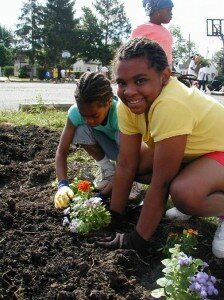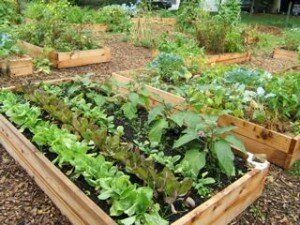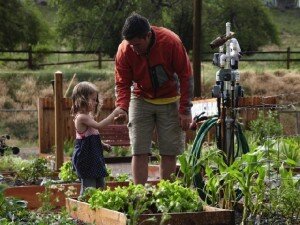9 Steps to Bloom Your Community
 Today at HandsOn Network, in Atlanta, we are volunteering, as a staff, at a local community garden! Taking part in a community garden is not only a great way to help the environment, but it is also a great way to form neighboring relationships.
Today at HandsOn Network, in Atlanta, we are volunteering, as a staff, at a local community garden! Taking part in a community garden is not only a great way to help the environment, but it is also a great way to form neighboring relationships.
You can fill your community garden with anything from vegetables to flowers, whatever your community members decide, will work! The most important thing is that you make sure to organize your gardeners and that the garden is taken care of by its members.
We encourage your to get out and embrace this beautiful spring weather, by starting your community garden. Not sure where to begin? Here are ten tips that will get your neighborhood growing today!
- Organize your interests: Determine whether or not your neighborhood actually wants a garden. If it does, determine what your neighbors would like to have planted in that garden. Find out who would like to be involved, and what would be needed to get the garden started.
-
Forms a garden party: Gather a list of interested community members who would like
 to play a role in the garden activities. These members will be vital in funding the garden, keeping up with its maintenance, and planning events.
to play a role in the garden activities. These members will be vital in funding the garden, keeping up with its maintenance, and planning events.
- Survey time: Research what resources your neighbors already have for the garden i.e. tools, plants, soil, etc. Make a plan for donation asks and sponsorships for needed materials.
- Location, location, location: Determine the best location for your garden. Whether you keep it within the neighborhood or at a community headquarters, determine which location would be best for all interested parties.
- Clean up time: Prepare your chosen land before you get your neighbors in. Whether you need to recruit volunteers for help or you can do it yourself, make sure your chosen spot is suitable for growing vegetation before the big planting day starts.
- Organize the space: After you have determined what you would like to plant in the garden, you must organize the plots according to growing needs. Some plants cannot grow in certain areas, soils, or lighting. It is important to know your plants needs before you stick them in the ground.
- Let the youth be involved: Make a space for a children’s garden in your community garden so that the youth in your community can be involved, as well. It will allow them to learn about forming neighboring relationships, while also volunteering for the environment.
- Organize duties: Make sure your members are clear on their assigned task, so that your garden can be maintained. It is important to design a system or contract that is agreed upon by the members, so that you can keep up with the condition of your garden.
-
Keep in touch: Organize a system that will keep garden members in touch with each other. Whether you want to
 exchange phone numbers or email addresses, it is important that all members can get in touch with each other in case anything comes up. It will also help maintain that sense of community between all those involved!
exchange phone numbers or email addresses, it is important that all members can get in touch with each other in case anything comes up. It will also help maintain that sense of community between all those involved!
Starting a community garden is a great way to volunteer this spring. You will be giving back to your community, while establishing relationships with your neighbors.
So, get out and get your grow on this season!
Have you started a community garden; let us know your tips in the comment section below!


